Mirror tiles: features of choice
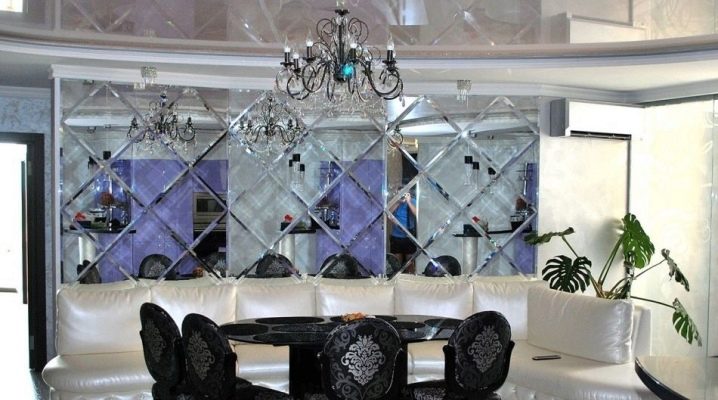
Mirrors are actively used in interior decoration. They make it visually more spacious, lighter, add notes of luxury and charm.
Following the popularity of mirror elements, tile manufacturers began producing mirror designs. They can be laid on the floor, mounted on walls or fixed to the ceiling. Using tiles with mirror effects instantly transforms the interior, making it unique and memorable.

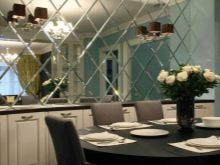
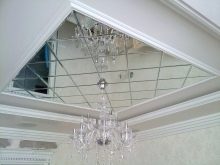
Peculiarities
Mirror tiles of the required size and shape are cut from large canvases, which distinguishes them from ceramic counterparts (they are pressed and fired).
They are based on molten glass mass.combined with mufflers, gaseous crystalline compounds. The latter provide the characteristic gloss of the finished product. After cutting the edges of the building material, they undergo a polishing procedure. This guarantees their smoothness and safety.
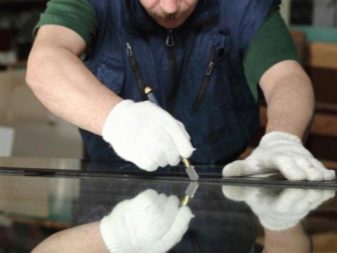
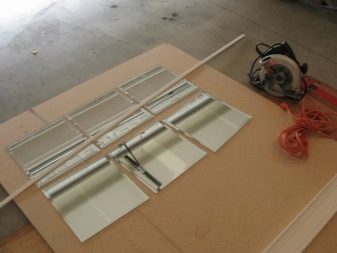
Various patterns and designs are applied by sandblasting. The contour of the drawing is first applied to the material, and a stream of sand is directed over it under high pressure. The grains of sand are knocked out on the glass, which are then folded into a pattern. This is how tiles with a mirrored surface and a matte pattern appear.
In the interior, tiles are also used, on which an image is applied using thermal printing methods or with the help of paint. However, this technology cannot boast of durability.
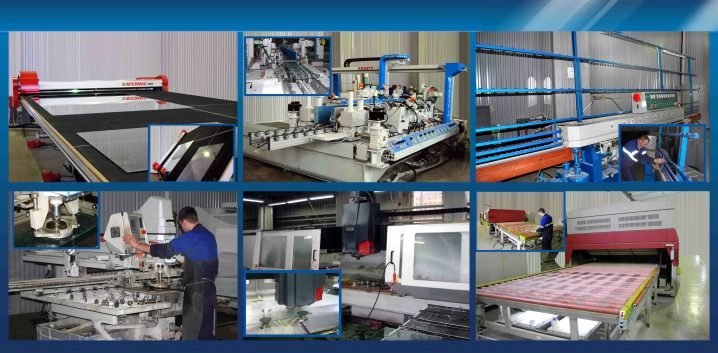
Types and characteristics
Depending on the location of the tiles, the following types are distinguished:
Ceiling
It copes with the task of raising the ceiling and achieving exclusivity of design.
In turn, there are such types:
- Polystyrene (or plastic) is a plastic base on which a special dye composition with metal microparticles is applied. The advantage of this option is the ease of installation and low cost, but such a tile distorts the image, which may look unattractive.
- Mirror glass is nothing more than glass cut into tiles. Of course, it costs more and is characterized by complex installation. To get an aesthetically pleasing result and "add" additional space to the room, you should take care of the ideal evenness of the ceiling, the accuracy of the ratio of the "pieces" of the mirror.
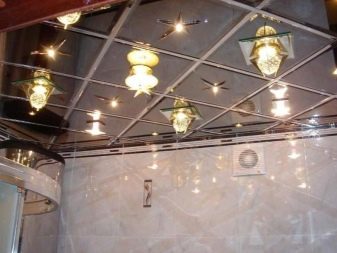
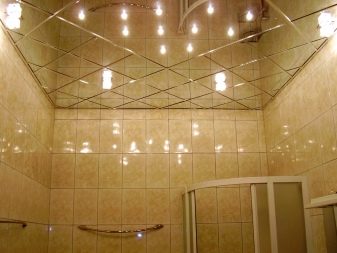
Wall
Its use also externally increases the area of the room and serves for zoning.
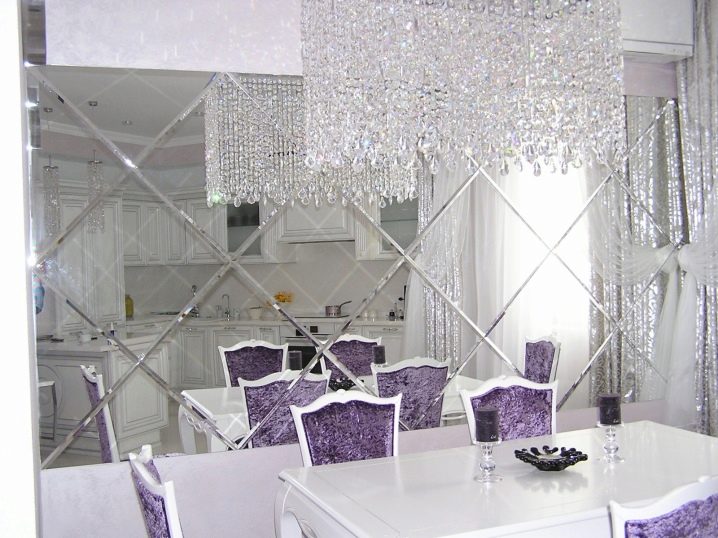
Outdoor
These are usually ceramic or clinker tiles with a mirror effect. It is important to understand that floor tiles must be designed for this, otherwise they will not withstand increased stress.
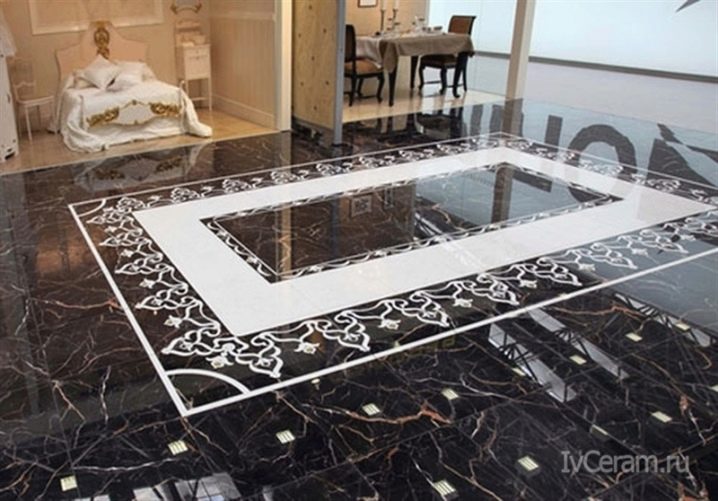
There is also a self-adhesive mirror effect tile. It consists of a mirror surface (outer) and an adhesive base (inner layer). The latter is covered with a protective film, which is removed immediately before installation.
The thickness of the elements is 0.4-0.6 cm, they themselves are well fixed on the base and do not require additional gluing. Installation of the material is quite simple, although it requires some skill. A positive result is possible only if the surface is flat and clean.

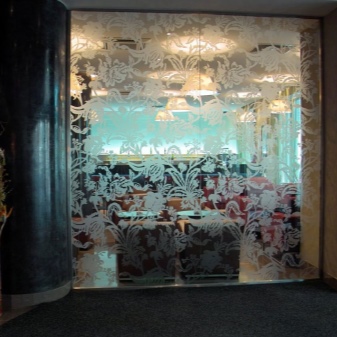
It is impossible to ignore the tile with a facet, which is a material that has beveled edges.

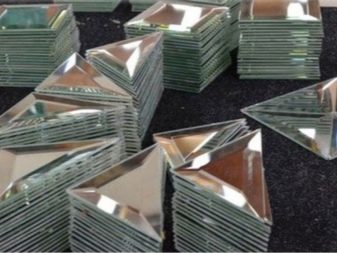
If we talk about the decorative design of mirror tiles, then it is worth considering the following varieties:
- Tinted, that is, darkened;
- Smooth and smooth (when laying on the surface, the joints are almost indistinguishable, the reflection is not distorted, not crushed);
- Material with patterns and ornaments;
- Panel, mosaic;
- Tiles imitating silver, chrome or gold surfaces.
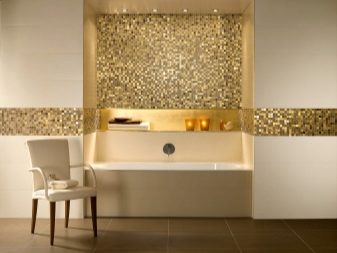
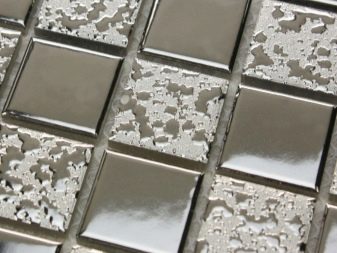
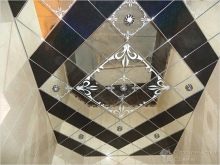
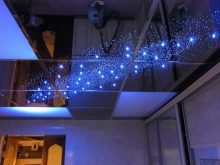
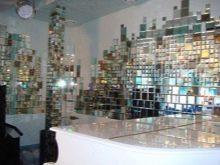
The material may differ in the coefficient of moisture resistance. For the bathroom, kitchen, swimming pools, tiles with higher moisture resistance are required than counterparts for the hall and bedroom.
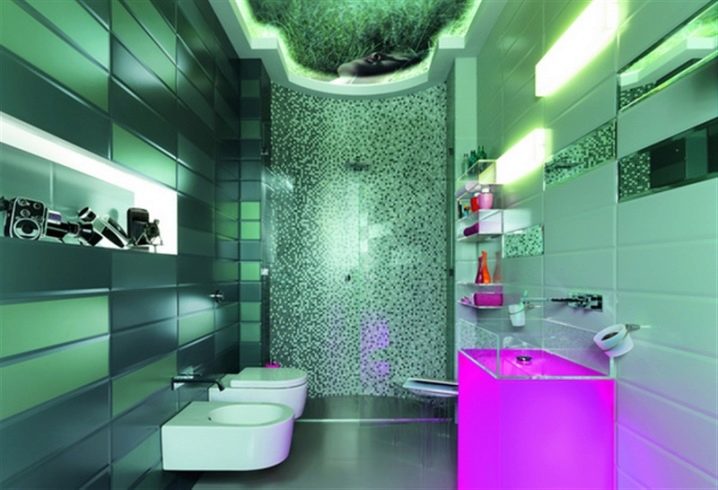
Advantages and disadvantages
The popularity of mirror material is due to its advantages:
- The reflectivity of the tiles is about 90%, therefore, with the correct placement of light sources with the help of "mirrors", it is possible to visually expand the room;
- The building material is resistant to mechanical shock, moisture and chemical reagents, which significantly expands the scope of its application;
- Thanks to the variety of types of tiles, you can create unique interior solutions;
- Many types of tiles have elasticity, flexibility, and therefore are suitable for the design of curved elements (columns, arches);
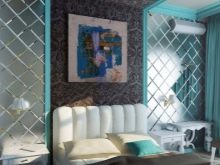
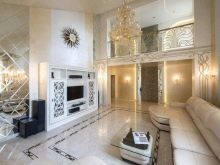
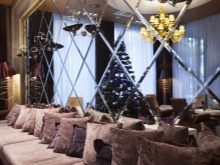
- "Mirror" material is characterized by a long, up to 20 years, period of operation;
- Fire safety;
- Low moisture absorption, which allows the material to be used in rooms with high humidity without the risk of mold and corrosion on the surface;
- Environmentally friendly, especially when it comes to mirror glass. In the manufacture of tiles, manufacturers refuse to apply impurities of copper and lead as a protective layer (regulated by GOST 17716-91), which is commonly observed in the production of household mirrors.
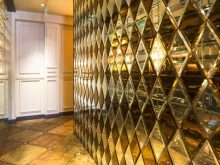
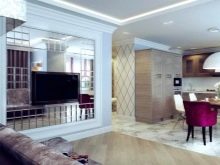

However, the material has its drawbacks. For example, over time, the mirror may become dull and blacken. We must not forget about the need for regular maintenance of the material - special alcohol-containing compositions will help to prevent the appearance of stains on the surface after cleaning.
Despite the mechanical resistance of the tile, it turns out to be more fragile in comparison with analogues, and if the "mirror" is damaged, there is a high risk of injury.
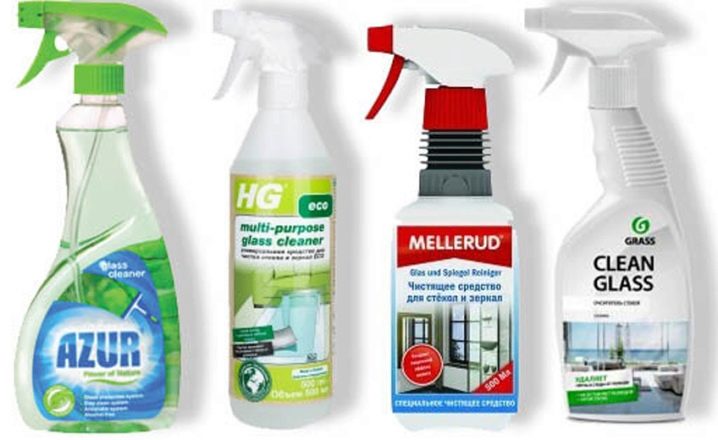
Finally, mirror tiles are more expensive than their ceramic counterparts.
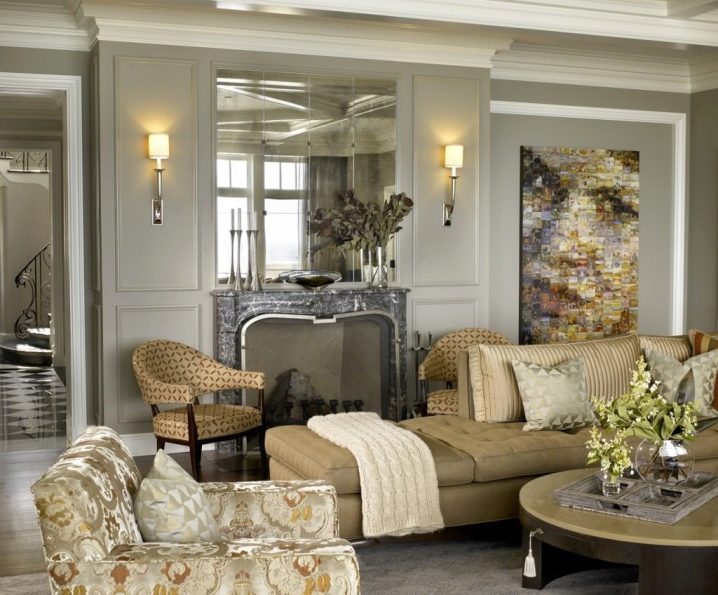
Forms
The standard tiles are rectangular. Although there are also square options, and if we talk about limited collections or individual orders, here the material can have any shape.
Today you can often find panels on sale. As a rule, it is represented by large square or round mirror tiles, around which are located smaller rhombuses, triangles with a mirror effect.
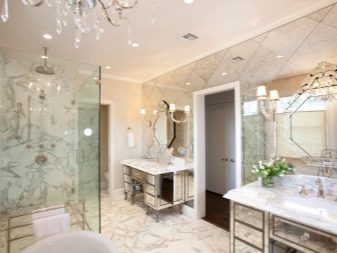
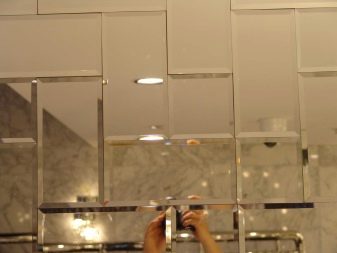
A variety of mosaic tiles can be considered mirrors - honeycombs. Due to the peculiarities of the organization, this tile diffuses light well, as a result of which the room is filled with air and freedom. An interesting effect can be achieved if matte and shiny cells, similar shades are used in the "honeycomb".
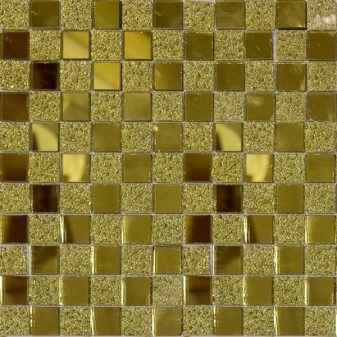
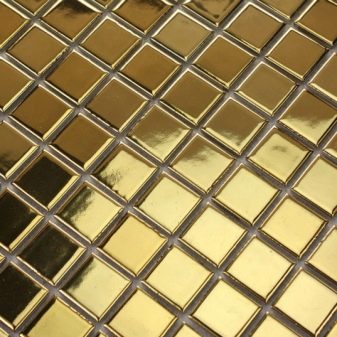
Dimensions (edit)
The standard dimensions of ceiling tiles are 59.5x59.5 cm, some models are equipped with holes for spotlights.
The sizes of wall tiles are more varied. Squares 29.5x29.5 cm and rectangles 120x240 cm are popular as they are more convenient for installation. In other words, the width of the tiles can be 10-30 cm, the standard thickness is 4-5 mm.
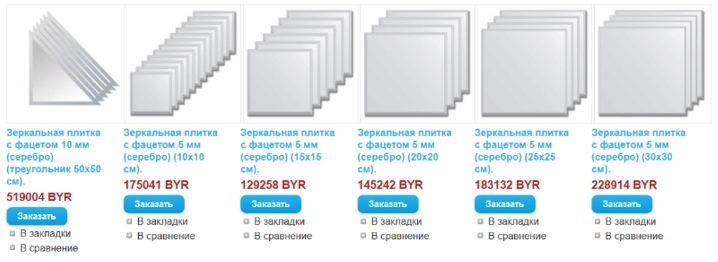
Tiles with facets are slightly (1.5 mm) smaller than similar tiles without bevel. This is due to the fact that to obtain a facet, the material is cut and polished at an angle. In this case, the width of the chamfer ranges from 3 to 40 mm.
When buying, you should also pay attention to the compliance of the tiles with state standards, as well as the absence of copper and lead in the composition of the mirror layer, as well as the ability of mirrors to reflect at least 92% of the light.
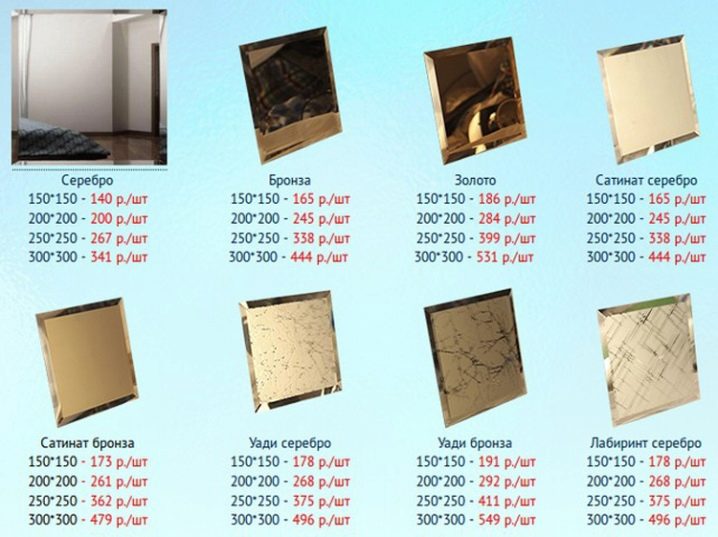
Color variations
Colorless mirror tiles are considered standard, which are versatile. It looks good in any interior. Mirror tiles are also distinguished, having one or another shade (among the popular ones are pastel shades). As a rule, such tiles are purchased in the same color scheme as the interior color scheme.
Black tiles, as well as materials that imitate natural marble or bronze surfaces, look elegant and solemn. Its surface can be glossy or matte.
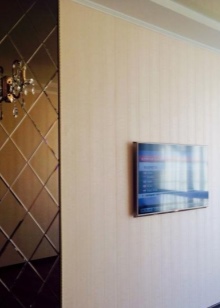

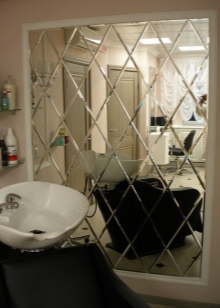
Silver, gold or bronze matte tiles look good in most classic interiors. However, it should be remembered that they must be used in dosage, and combined with other natural materials (expensive textiles, wooden furniture).
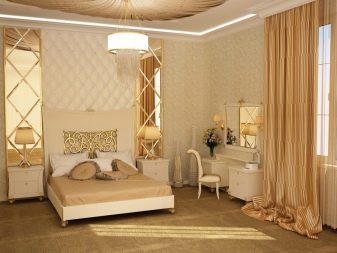

Manufacturers overview
Most of the manufacturers producing clinker and ceramic tiles also produce mirror variations. If you don't know which option to choose the last one, just read the reviews of the largest tile manufacturers.
Kerama Marazzi Is the largest domestic brand that has won the trust of consumers. This is due to the high quality of products, their compliance with GOST. A distinctive feature of the manufacturer is also following brands in interior fashion. So, the hot "hits" of the collection today are matte bronze, silver and graphite tiles. The disadvantage of the products is the high cost (on average, 1000 rubles / sq. M).
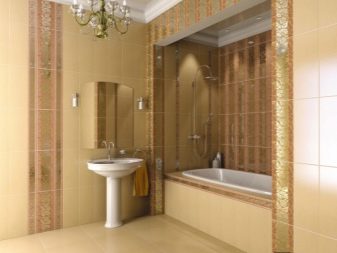
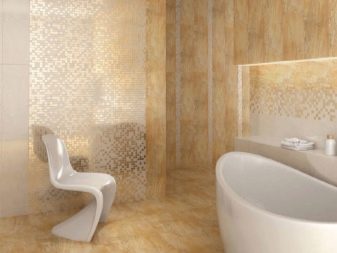
The leading domestic "tiler" is also Shakhty faience factory (Vladimir region). The products are manufactured under the Shakhtinskaya Tile brand and are considered the embodiment of European quality, elegance and attractive prices. The manufacturer's assortment includes classic samples of square, rectangular and triangular shapes, as well as counterparts in mirror and silver versions.
Another brand whose tiles can always be found in large stores such as Leroy Merlin, Ikea - Euro-Ceramics LLC... The production of products is carried out using advanced Italian equipment, which guarantees durability and impeccable quality. "Euro-Ceramic" boasts a wide range, which also includes mirror finishing materials.
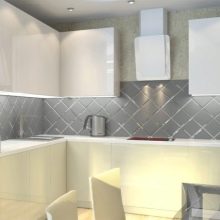
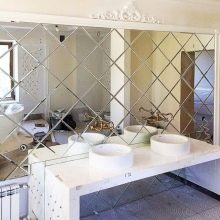
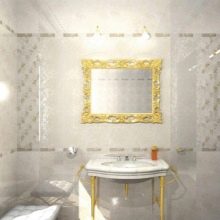
Lovers of shine and silver shade can purchase tiles from LLC "Nephrite-Keramika"... It is this tile design that is abundantly presented by this manufacturer. In addition, a large number of small-format tiles and mosaics are produced.
The largest supplier of mirror tiles is glass factory in Belgorod... The manufactured products are branded as "DST" ("House of Glass Technologies")... The manufacturer's assortment includes tiles with a variety of polishing variations ("euro pencil", rectilinear falsetto), matte surfaces (that is, sandblasting it and making patterns in this technique), photo printing. In addition to standard tiles, you can find here mosaics, imitation of stained-glass windows, self-adhesive films with a reflective surface. Among the fashionable novelties are the Honeycomb collections, silver, bronze and graphite tiles and their matte counterparts.
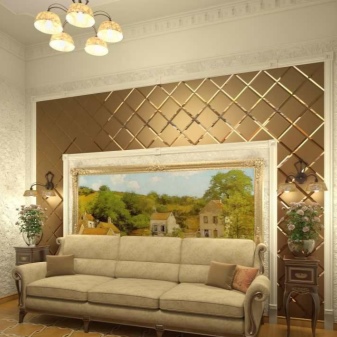

For connoisseurs of sophisticated solutions, "DST" invites you to pay attention to the mosaic "Classic" or "Classic +"... The latter is characterized by a combination within one panel of 2 textures similar in shade (for example, silver and graphite). If, when choosing a tile, you are guided by its shape, evaluate the "Rhombo" or "Quadro" collection. The advantage of mirror mosaic is not only the originality of its appearance, but also the possibility of laying on uneven substrates.
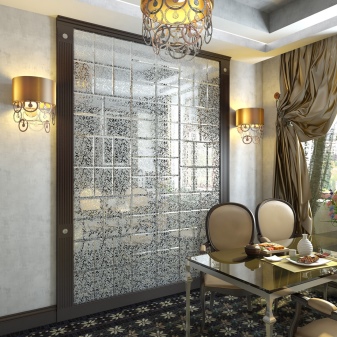

Placement Tips
The tiles are widely used in bathrooms and kitchens due to their moisture resistance and ease of cleaning. As a rule, the premises are finished with tiles, which can be supplemented with mirror tiles.If the latter is laid diagonally, the illusion of deep space is created. If the room is also small in height, then the mirror material will help "raise" the ceiling and expand the area.

It is not recommended to place the "Mirror" in the corridor on opposite sides opposite each other. It will be much more effective if you place tiles on one wall at the beginning of the corridor, and on the other at the end. In this case, you will get soft diffused lighting, additional volume, and spaciousness. As for the shape, for the hallway, in most cases, you should choose a square-shaped material.
You can add light and comfort to a small bedroom by decorating the wall opposite the window with mirror material. In this case, it is important that direct sunlight does not fall on the tile, for which the mirror area is located slightly above the window level.
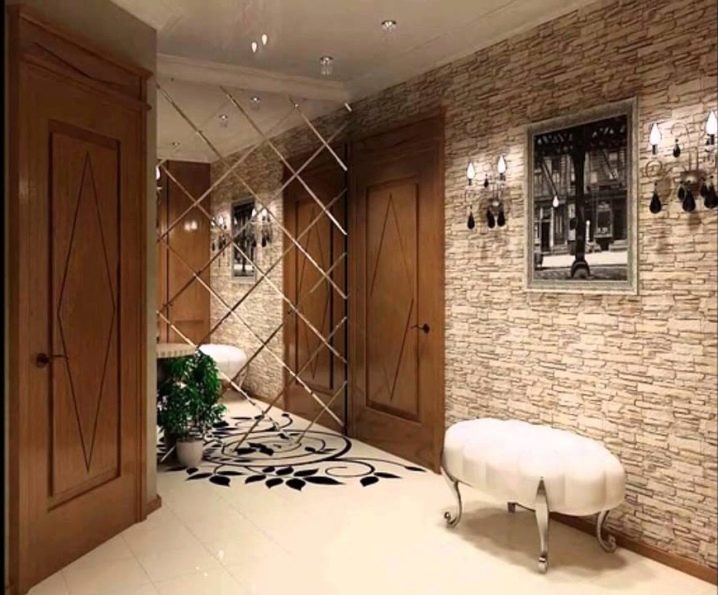
It is important not to overdo it with the area of the mirror area, you should not decorate the entire wall in this way. Otherwise, instead of an elegant and cozy room, you will get a cold and formal one.
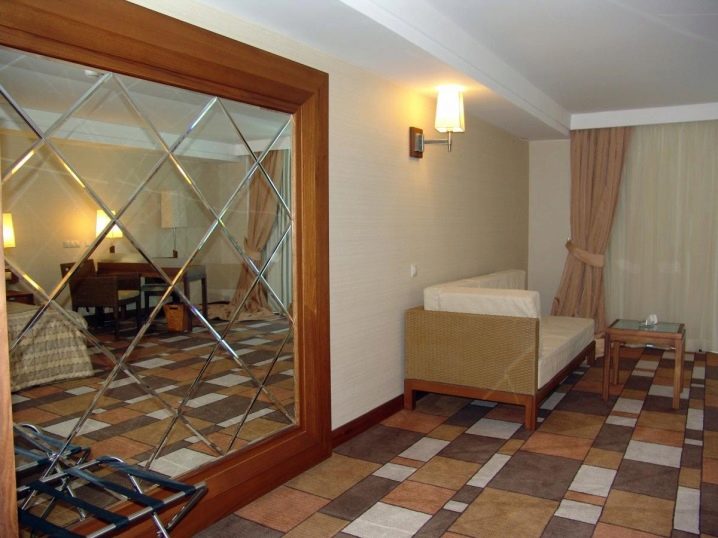
Mirrored decor can also make large rooms more intimate and homey. For this, shiny tiles are placed in combination with other materials, avoiding the installation of a single mirror structure.
Rhombus and rectangular tiles are best for visually expanding rooms, but they won't look great when placed in the center of the composition. For the "heart" of a mirror composition, it is better to choose a square, circle or oval, and frame it with rectangular or triangular tiles.
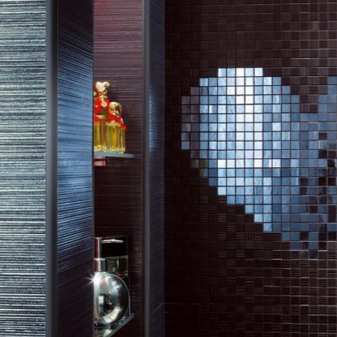

Mirror effect products are suitable for most interior styles. So, for example, a tile with a pattern or pattern looks good in a Provence style kitchen. The surfaces of strict laconic forms, as well as tinted options, are suitable for high-tech, loft and avant-garde styles. A deliberately aged tile fits perfectly into most rooms in a classic version.
You can visually lift a low ceiling using ceiling elements. They can be located over the entire ceiling area and equipped with lighting systems or mounted in the center of the ceiling and complemented by multi-level structures. Another easy way to "raise" the ceiling is to attach mirrored materials to the bottom of the walls in the room.
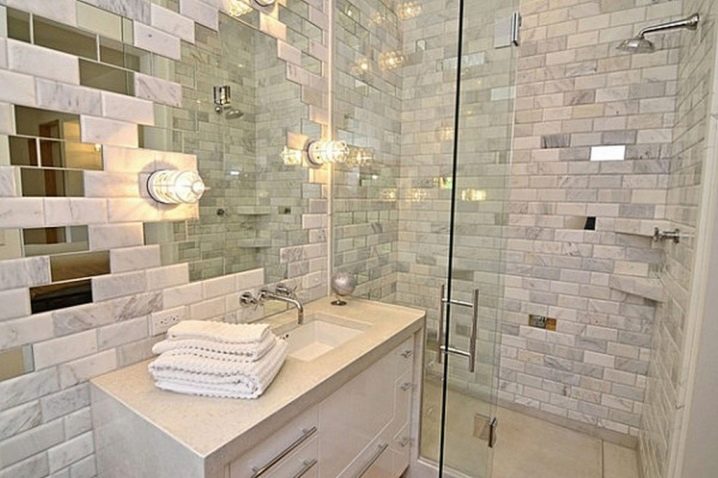
When combining mirror tiles, it is important to remember that elements that are different in texture must have the same dimensions. For the effect of a large room, choose a tile without darkening and framing.
In most cases, materials with mirrored surfaces are recommended to be laid just above the middle of the wall, this will avoid the reflection of a large number of objects and people.
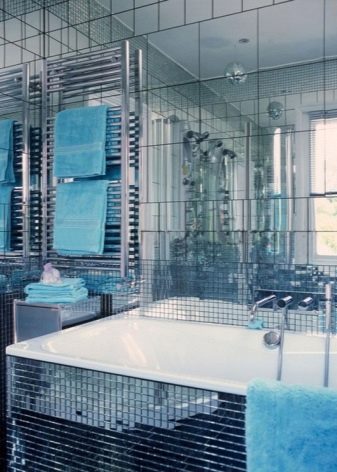
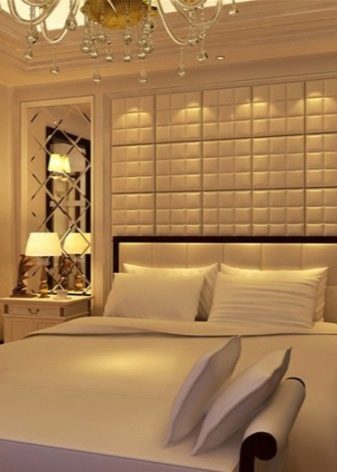
Spectacular examples
As already mentioned, most often mirror tiles serve to visually increase the area of the room. To do this, it should be positioned so that the mirrors reflect the light from the window.
If we are dealing with an elongated room, for example, corridors, hallways, it is not recommended to lay out the far wall with reflective building materials. This will make the room even more elongated and uncomfortable.
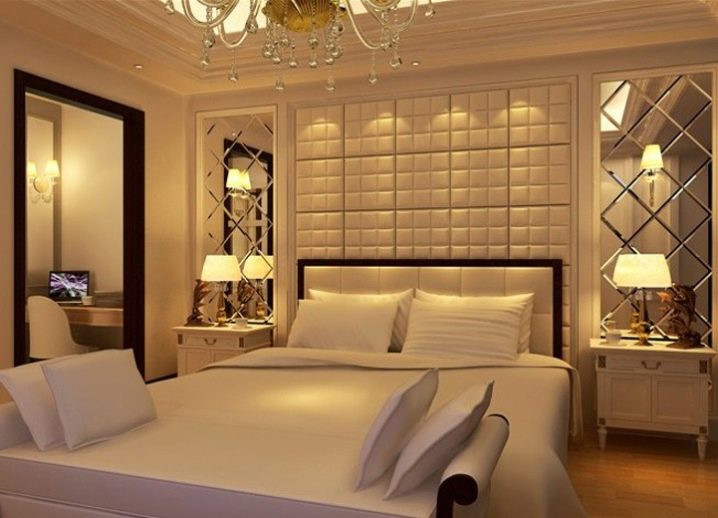
But in small rooms and bedrooms, you can decorate the entire wall with tiles with a mirror effect. True, it is better to place it behind or above the sofas and armchairs, the head of the bed. Use the ability of mirrors to double objects to create a cozy and intimate feeling. For example, in the reflection zone, you can arrange houseplants, spread pillows or textiles, and install a chair. The resulting corner will immediately be filled with home warmth and a special atmosphere.
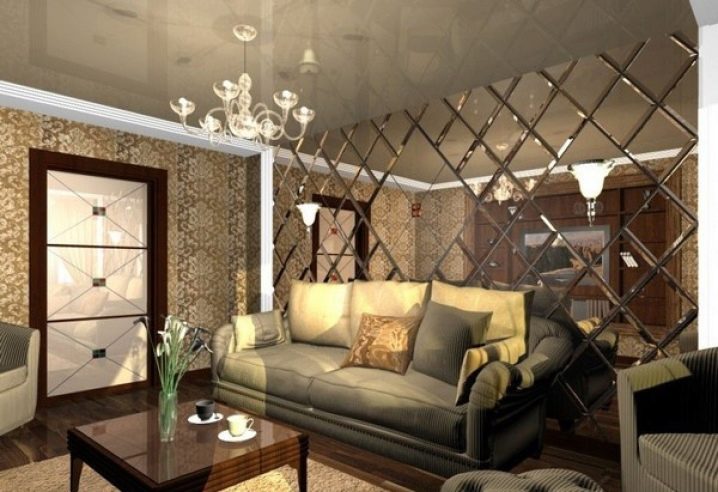
For kitchens, it is wiser to choose mosaics or small tiles. This is due to the fact that large elements with the slightest contamination will look sloppy.
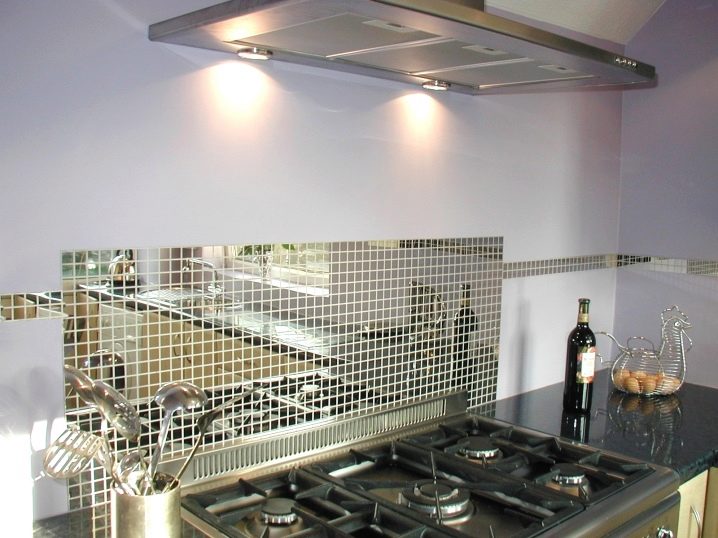
The mirrored surface looks organically in the toilet and bathroom.It has the same effect both in combination with other types of coatings, and in the case when all surfaces are lined with mirrors. The only drawback of this decor is that the surface fogs up under the influence of steam, hot water.
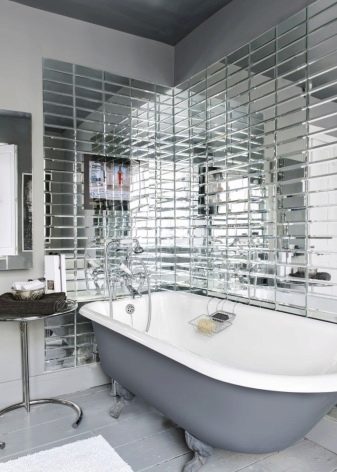

If a small room cannot boast of high ceilings, mirror tiles will come to the rescue. A similar technique is good in a living room or bedroom. It is enough to decorate the central part of the ceiling with the material and correctly adjust the lighting. Also make sure that the part of the room reflected in the mirror does not look sloppy.

It is better to refuse tile-mirrors on the ceiling of large rooms. Such a design will turn out to be too empty and cold.
How to glue mirror tiles to the ceiling, see the next video.













The comment was sent successfully.